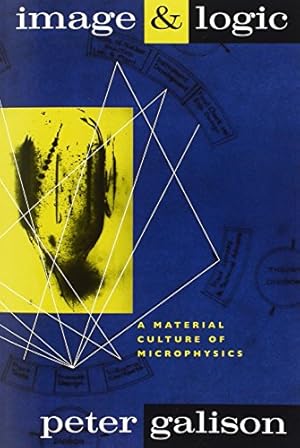9780226279169 - Image and Logic: Material Culture of Microphysics de Galison, Peter (1 resultados)
Tipo de artículo
- Todo tipo de artículos
- Libros (1)
- Revistas y publicaciones
- Cómics
- Partituras
- Arte, grabados y pósters
- Fotografías
- Mapas
-
Manuscritos y
coleccionismo de papel
Condición
- Todo
- Nuevos
- Antiguos o usados
Encuadernación
- Todo
- Tapa dura
- Tapa blanda
Más atributos
- Primera edición
- Firmado
- Sobrecubierta
- Con imágenes del vendedor
- Sin impresión bajo demanda
Ubicación del vendedor
Valoración de los vendedores
-
IMAGE & LOGIC
Publicado por U.Chicago Press, 1997
ISBN 10: 0226279162ISBN 13: 9780226279169
Librería: LIBRERIA LEA+, Santiago, RM, Chile
Libro
Dura. Condición: New. Estado de la sobrecubierta: Nuevo. No Aplica Ilustrador. 0. "I want to get at the blown glass of the early cloud chambers and the oozing noodles of wet nuclear emulsion; to the resounding crack of a high-voltage spark arcing across a high-tension chamber and leaving the lab stinking of ozone; to the silent, darkened room, with row after row of scanners sliding trackballs across projected bubble-chamber images. Pictures and pulses?I want to know where they came from, how pictures and counts got to be the bottom-line data of physics." (from the preface). Image and Logic is the most detailed engagement to date with the impact of modern technology on what it means to "do" physics and to be a physicist. At the beginning of this century, physics was usually done by a lone researcher who put together experimental apparatus on a benchtop. Now experiments frequently are larger than a city block, and experimental physicists live very different lives: programming computers, working with industry, coordinating vast teams of scientists and engineers, and playing politics. Peter L. Galison probes the material culture of experimental microphysics to reveal how the ever-increasing scale and complexity of apparatus have distanced physicists from the very science that drew them into experimenting, and have fragmented microphysics into different technical traditions much as apparatus have fragmented atoms to get at the fundamental building blocks of matter. At the same time, the necessity for teamwork in operating multimillion-dollar machines has created dynamic "trading zones," where instrument makers, theorists, and experimentalists meet, share knowledge, and coordinate the extraordinarily diverse pieces of the culture of modern microphysics: work, machines, evidence, and argument. 1480 gr. Libro.


